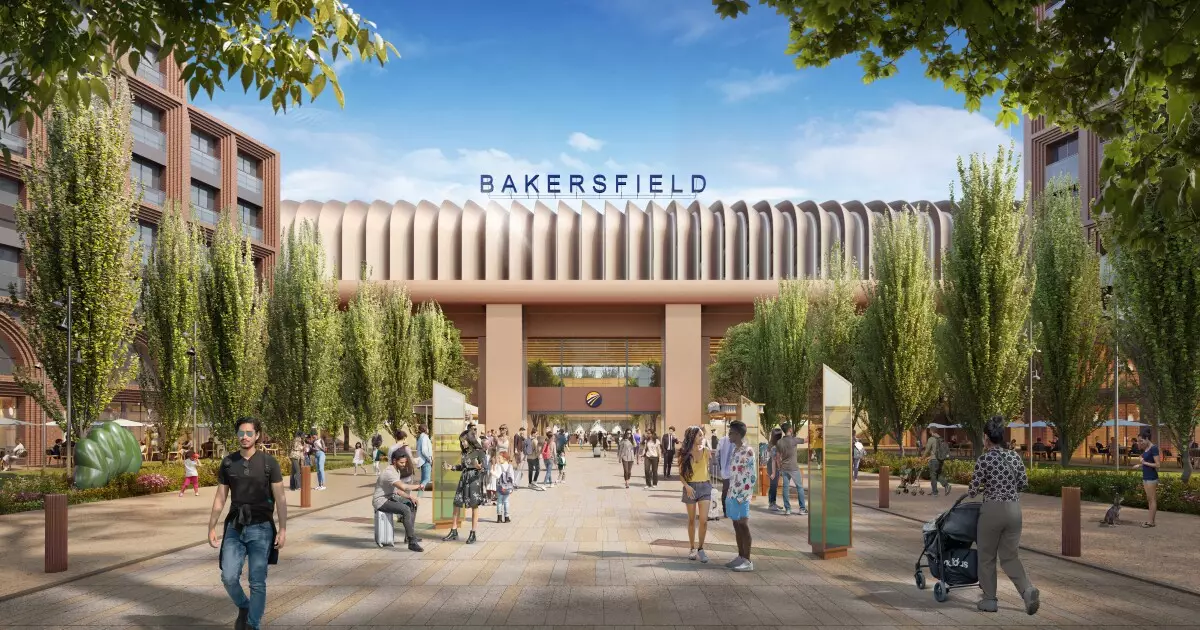California’s high-speed rail project was once touted as a groundbreaking leap into the future of transportation—an ambitious endeavor designed to connect its major cities in a swift, eco-friendly manner. However, two decades later, the excitement has fizzled out, morphing into a chaotic narrative marked by cost overruns and crippling budget shortfalls. The alarming news of a $7 billion deficit in funding for the Central Valley segment of the project has put the entire undertaking on shaky ground. This is a striking example of how governmental projects can spiral into calamity when mismanaged, showcasing that, perhaps, good intentions alone cannot save the day.
Federal Scrutiny and Local Discontent
The high-speed rail initiative has been the focal point of criticism, particularly from former President Trump and Transportation Secretary Sean Duffy, who have urged for intense scrutiny of the project’s management. Federal oversight now looms large, with a stern warning of potential clawbacks on a sizable amount of federal grants—$4 billion, to be precise. It’s rare to see such alignment among Republicans on a project that was celebrated as a pinnacle of progressive infrastructure—an apparent indication that bi-partisan discontent is not merely a byproduct of political rivalry, but rather a sign of deep, systemic problems within the rail authority.
The commendable dream of having a high-speed rail does not justify the costly inefficiency that has plagued this initiative. This situation highlights that relying on federal funding might lead many states down a precarious path of financial dependency—roads riddled with potholes don’t get fixed when capital is wasted on vanity projects.
The $33.5 Billion Question
The Central Valley segment, with its skyrocketing cost estimate of $33.5 billion for just a fraction of the route, raises profound questions about fiscal responsibility in government. What once seemed an exciting leap into a modernized transport system has revealed itself to be a case study in poor management and unrealistic budgeting. Helen Kerstein from the state’s Legislative Analyst Office pointed out the absence of a credible plan to bridge the gaping $7 billion gap, raising doubts about the future of the project. This lack of foresight not only jeopardizes current efforts but also opens the floodgates to questions about how many more taxpayers’ dollars will be drained in an endeavor that most agree is already becoming an insurmountable challenge.
Redirecting Funds: A Logical Alternative?
Amidst the chaos, Assemblymember Alexandra Macedo’s proposal to redirect $1 billion in cap-and-trade funding away from high-speed rail and towards pressing issues such as wildfire prevention underscores a crucial point: the need for prioritization in legislative spending. California faces existential challenges that could use immediate funding. Despite the higher ideals of modernization and sustainability, one cannot ignore the human and ecological crises at hand. Will the continued investment in a mismanaged rail project prove to be a wise expenditure in the long term?
A Call for a Hard Rethink
The trajectory of California’s high-speed rail system shines a bright light on the dangers of government overreach and the hurdles of ambition that lack plausible planning. As costs balloon from initial estimates of up to $34 billion in 2008 to projections now ranging between $100 billion and $128 billion, it’s time to reassess whether this project is worth its continually escalating price tag. The notion of improving public infrastructure should come hand-in-hand with accountability, and it appears that a reality check is long overdue.
Ian Choudri’s new leadership role brings a glimmer of hope in seeking cost efficiencies and public-private partnerships, a strategy that might just salvage an undertaking that so far resembles a runaway train—expensive and countless miles off course from its intended destination. The message is clear: taxpayers deserve better than a persistent financial black hole, and it’s high time for California to prioritize thoughtful spending that resonates more closely with the pressing realities and needs of its citizens.

